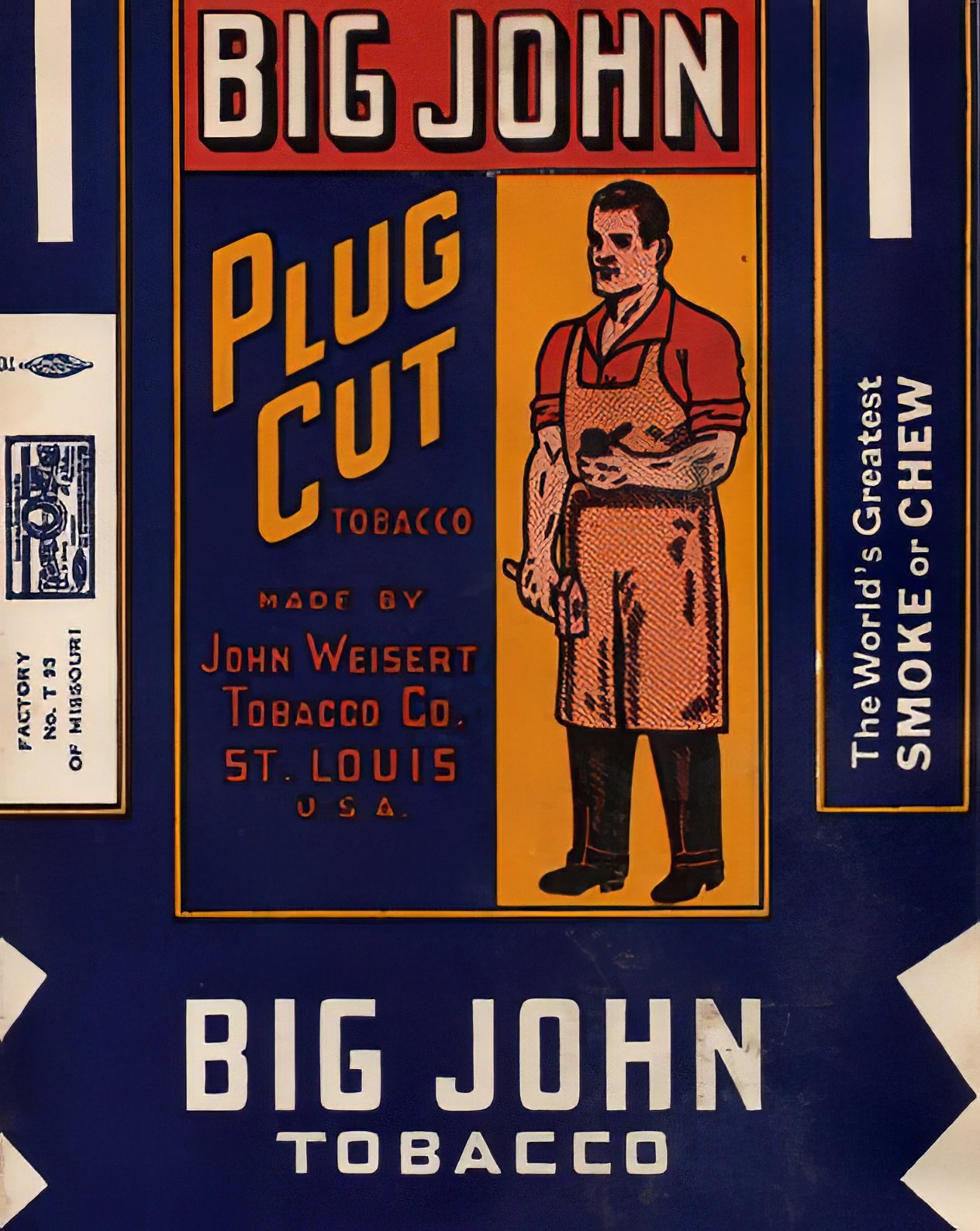Weisert Tobacco Co.
There was a time when Tobacco Road ran through St. Louis. Toward the end of the 19th century, St. Louis was the largest processor of pipe and chewing tobacco in the United States. According to an industry periodical, Connorton’s Tobacco Brand Directory of the United States, St. Louis was number one in tobacco-producing cities for the year 1887 with an output of 40,284,675 pounds. The runner up was Jersey City, followed by Baltimore, Chicago, and Durham, NC. Local manufacturers and processors responsible for this superlative included but were not limited to the John Weisert Tobacco Company, the Christian Peper Tobacco Company, the Liggett & Myers Tobacco Company and its predecessor, the Drummond Tobacco Company.
The John Weisert Tobacco Company, located at 1120 to 1132 South 6th Street, produced smoking tobacco and plug cut under scores of labels including Orphan Boy, Big John, Granulated 51, Harp Plug Cut —“Smoke or Chew”—and the felicitously-named Joysmoke, sold as tobacco for cigarettes, cigars or the pipe. Founded in the 1850s, Weisert Tobacco operated until the late 1980s under the helm of the founder’s great-grandson, Walter Weisert, and until the end was the last remaining tobacco company in Missouri. The once-flourishing Christian Peper Tobacco Company, founded 1852, had their offices at 707 North First Street in Laclede’s Landing. This building, now the offices of the Metro Transit System, once stored the leaf for the company. Its plank floors were slanted so workers could roll large barrels of cured tobacco down toward waiting cargo ships on the Mississippi. In 1906, according to the Laclede’s Landing website, the company produced a series of racy cards for their Turkish brand Kadee Cigarettes, one of the first uses of artistically-posed nude models for advertising.
Industry giant Liggett & Myers had its massive processing plant at 4121 Folsom. For more than 100 years L & M made chewing tobacco, the flagship brand being Star Tobacco. The company also made many brands of cigarettes, including the popular Chesterfield, which they made from 1911 until 1998 at which time Phillip Morris took over. But Chesterfield cigarettes were around long before 1911. The Drummond Tobacco Company of St. Louis began making Chesterfield cigarettes in 1873. James T. Drummond was a successful plug tobacco manufacturer who had introduced Chesterfield, Cannon, and Drum cigarettes as a sideline. – Wm. Stage
Big John – 1120 S. 6th Street
In the year 2013, this wall sign has been around for at least a century, although I just recently noticed it driving along I-55 just south of Downtown St. Louis. Only the two words, but immediately I knew what it was—a pitch for Weisert Tobacco Company’s finest product. In the 1980s, I had done a magazine feature on tobacco manufacturing here and during that time I got to know Walter Weisert, a good man, partial to bib overalls, with an appreciation for the heritage he’d inherited. By that time, Weisert Tobacco, around since the 1850s, was the last remaining tobacco manufacturer in Missouri. Walter was painfully aware that his operation was dying, going the way of the streetcar and the icepick; he was down to one cigar maker, an old man with a constant half-chewed stogie jutting from his mug. The end was hastened one day when Walter fell while working on one of the floors and was seriously injured. Already up in age, he could no longer get around and that was the end of Weisert Tobacco.
Big John photo by Margaret Stage
Big John Tobacco Label circa 1920s – collection of Wm. Stage

